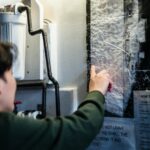The digital landscape continues to evolve rapidly, constantly exploring new ways to improve specialization, security, and workflow efficiency. In web architecture and computer-aided design, a revolutionary development has emerged that bridges the longstanding divide between digital identity and technical functionality. This innovation introduces the .ydesi generic top-level domain, a dual-purpose platform that serves both as a verified professional domain for the global design community and as a next-generation file format for CAD data. This convergence promises to streamline design workflows, protect intellectual property, and foster a more interconnected and trustworthy digital environment for engineers, architects, and designers.
Traditional internet namespaces, dominated by extensions such as .com and .net, provide little context about a website’s purpose or credibility. Similarly, CAD workflows face challenges like file incompatibility, data loss during conversion, and version control issues. The .ydesi initiative addresses these challenges by combining a specialized online identity with a sophisticated digital file format, offering professionals a reliable space for both their presence and their most critical assets. This article explores the .ydesi ecosystem, its dual functionality, operational mechanics, practical applications, and the broader implications for the design and manufacturing sectors.
Understanding the .ydesi Domain: A Verified Digital Identity
Introduced in 2025 by a consortium of CAD developers, industrial standards organizations, and key figures in architecture and engineering, the .ydesi domain was designed to provide a secure and professional corner of the internet for the design industry. Unlike general-purpose extensions, registration is restricted to verified entities, ensuring that any domain within this namespace represents a legitimate operation.
Registration and Verification
Acquiring a .ydesi domain involves a detailed verification process. Applicants must provide professional accreditation, business registration in relevant sectors, or affiliation with recognized design institutions. This gatekeeping mechanism guarantees credibility, offering immediate trust to clients, collaborators, and end users interacting with the domain.
Target Users and Applications
The platform is suitable for diverse stakeholders, including:
- Architecture firms presenting project portfolios (fosterandpartners.ydesi)
- Engineering conglomerates hosting corporate portals (siemens.ydesi)
- Freelance designers building personal branding (jane-doe.ydesi)
- Open-source hardware initiatives (open-source-vehicle.ydesi)
- Educational institutions showcasing research and curricula (mit-designlab.ydesi)
A verified domain signals professionalism and reliability, providing clear context for visitors before they engage with the content.
Advantages of a Specialized Domain
A dedicated namespace brings several benefits:
- Brand alignment and clarity – Clearly communicates a company’s professional focus.
- Enhanced visibility – Verified domains are favored by search engines for industry-specific queries.
- Reduced risk of spam – Verification limits malicious use, providing a safer and cleaner digital environment.
The .ydesi File Format: A Unified CAD Standard
Beyond its role as a domain, the platform serves as a next-generation CAD file format. The .ydesi extension functions as a comprehensive digital container, designed to overcome limitations of current formats like .STEP, .IGES, or proprietary files such as .SLDPRT and .DWG.
Complete Digital Encapsulation
A .ydesi file preserves:
- Accurate 3D geometry – Maintaining the full boundary representation of the object.
- Parametric history – Retaining the feature tree and design intent for cross-platform editing.
- Embedded metadata – Including material specifications, manufacturing tolerances, supplier information, and revision notes.
- Simulation results – Linking pre-run FEA or CFD analyses directly to the model.
- Documentation – Incorporating drawings, assembly instructions, and bill of materials within the same file.
Blockchain for Security and Provenance
Files can be cryptographically hashed and recorded on a distributed ledger, establishing an immutable record of creation and edits. This provides intellectual property protection, reliable version control, and auditability, ensuring trust in collaborative and critical projects.
Cross-Platform Interoperability
With publicly available specifications, major CAD vendors can provide native support, eliminating the need for third-party converters that often lead to data corruption. The goal is seamless workflows where a file moves between different software systems without losing design intent, metadata, or simulation results.
Integrating Domain and Format for a Unified Ecosystem
The innovation of this platform lies in the integration of verified domains with intelligent CAD files, creating a connected, cloud-based design ecosystem.
Smart Data Linking
Files can embed metadata linking directly to verified online resources. For example, a component in a model might link to a supplier portal, providing real-time updates on specifications, inventory, and ordering. This transforms static models into dynamic, actionable assets.
Cloud-Based Workflow Integration
Opening a local file can trigger connections to a cloud project portal, synchronizing versions, downloading updated simulation data, and updating team logs. The file and the verified domain together create a single, unified project environment accessible across devices and locations.
Establishing Trust and Reliability
The combination of verified domains and cryptographically secured files provides an unprecedented chain of trust. Accessing a critical design asset from a verified source ensures both the origin and the content are authentic, reducing the risk of counterfeit parts or flawed designs, particularly in high-stakes industries.
Impact on Design and Manufacturing
The adoption of this platform can reshape several aspects of design, engineering, and production.
Optimizing Supply Chains
Intelligent CAD files linked to verified domains allow automated procurement and inventory management. Systems can identify required components, check availability, and generate purchase orders with minimal human input, reducing errors and accelerating production timelines.
Advancing the Digital Thread
The platform supports the Digital Thread concept, ensuring seamless flow of data from design to manufacturing, maintenance, and decommissioning. This connectivity improves efficiency, reduces redundancy, and enhances lifecycle management.
Enabling Global Collaboration
By lowering barriers and enhancing trust, professionals across the world can collaborate effectively. Designers, engineers, and manufacturers from different continents can contribute to the same project with confidence in data integrity and partner credibility, fostering innovation across borders.
Practical Considerations
Adoption Challenges
Widespread success depends on industry adoption. CAD vendors must implement native support, and organizations must see the value of transitioning from existing workflows. Comprehensive tools and support from the platform consortium are essential to ease migration.
Security and Governance
While blockchain enhances security, proper governance is crucial. Ledger management, key control, and dispute resolution protocols must be transparent and fair. The consortium serves as a central authority to maintain trust and oversight.
Roadmap and Expansion
The initial focus is mechanical and architectural design. Future developments may include electronics design integration, additive manufacturing support, and other extensions based on community needs.
Conclusion
This dual-purpose platform represents a transformative approach to digital design. It combines a verified professional domain with an intelligent, data-rich CAD format to improve trust, interoperability, and workflow efficiency. By providing a unified ecosystem, it addresses fragmented data, unreliable sources, and disconnected systems, enabling secure collaboration and innovation.
For modern designers, engineers, and manufacturers, adopting this system is a step toward a connected, reliable, and future-ready digital environment. The platform is positioned to redefine how projects are conceptualized, designed, and realized, setting a new standard for professional digital identity, workflow integration, and collaborative innovation.






